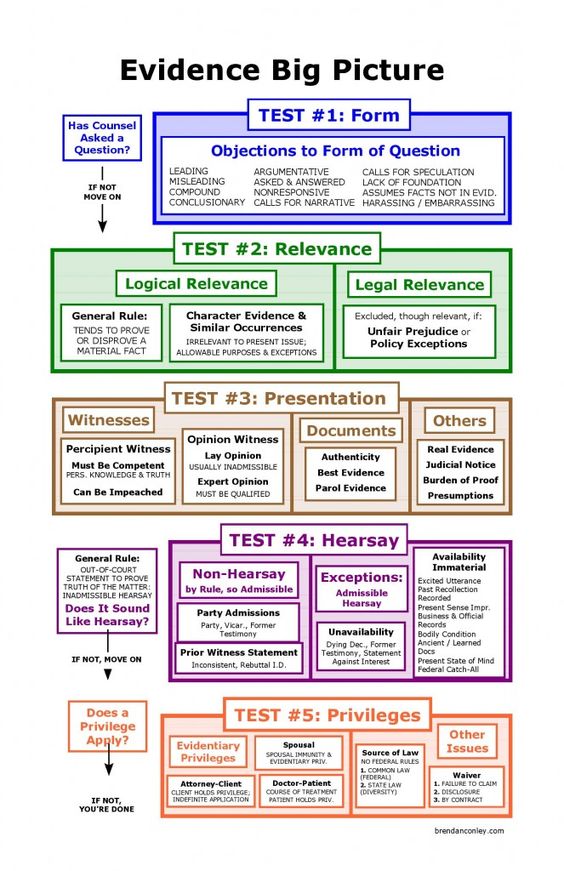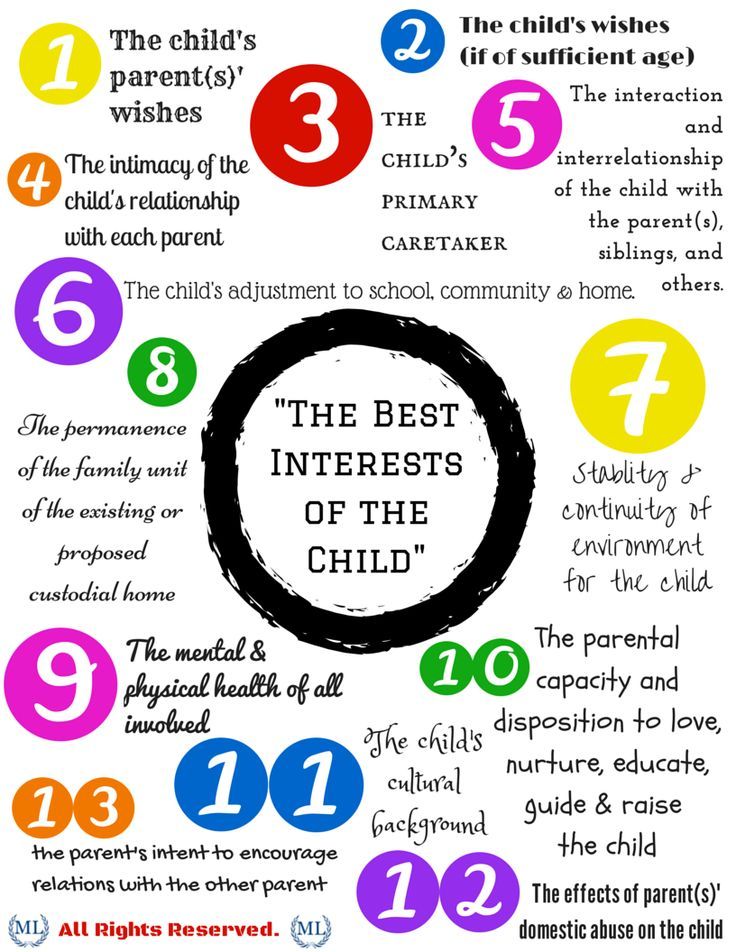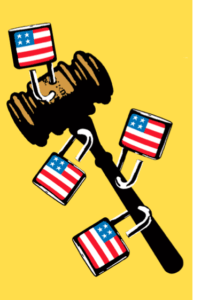FAM § 3011 – Determining Best Interest Child – Family Code 3011
Family Code Sections 3011.
In making a determination of the best interest of the child in a proceeding described in Section 3021, the court shall, among any
other factors it finds relevant, consider all of the following:
- (a) The health, safety, and welfare of the child.
- (b) Any history of abuse by one parent or any other person seeking custody against any of the following:
- (1) Any child to whom he or she is related by blood or affinity or with whom he or she has had a caretaking relationship, no matter how temporary.
- (2) The other parent.
- (3) A parent, current spouse, or cohabitant, of the parent or person seeking custody, or a person with whom the parent or person seeking custody has a dating or engagement relationship. As a prerequisite to considering allegations of abuse, the court may require substantial independent corroboration, including, but not limited to, written reports by law enforcement agencies, child protective services or other social welfare agencies, courts, medical facilities, or other public agencies or private nonprofit organizations providing services to victims of sexual assault or domestic violence. As used in this subdivision, “abuse against a child” means “child abuse” as defined in Section 11165.6 of the Penal Code and abuse against any of the other persons described in paragraph (2) or (3) means “abuse” as defined in Section 6203 of family code.
- (c) The nature and amount of contact with both parents, except as provided in Section 3046.
- (d) The habitual or continual illegal use of controlled substances, the habitual or continual abuse of alcohol, or the habitual or continual abuse of prescribed controlled substances by either parent. Before considering these allegations, the court may first require independent corroboration, including, but not limited to, written reports from law enforcement agencies, courts, probation departments, social welfare agencies, medical facilities, rehabilitation facilities, or other public agencies or nonprofit organizations providing drug and alcohol abuse services. As used in this subdivision, “controlled substances” has the same meaning as
defined in the California Uniform Controlled Substances Act, Division 10 (commencing with Section 11000) of the Health and Safety Code. (e)- (1) Where allegations about a parent pursuant to subdivision
(b) or (d) have been brought to the attention of the court in the current proceeding, and the court makes an order for sole or joint custody to that parent, the court shall state its reasons in writing or on the record. In these circumstances, the court shall ensure that any order regarding custody or visitation is specific as to time, day, place, and manner of transfer of the child as set forth in subdivision (b) of Section 6323. - (2) The provisions of this subdivision shall not apply if the parties stipulate in writing or on the record regarding custody or visitation.
- (1) Where allegations about a parent pursuant to subdivision
Child Custody and The 12 Best Interest Factors
-
What are the “Best Interest” Factors?
The court weighs the Best interest factors after a determination of custodial environment has been established. This is because the court must first know the burden of proof (“clear and convincing evidence” or “by preponderance of the evidence”) by which to judge evidence brought by the parties concerning the 12 factors.
The court then weighs these factors to determine what is in the child’s best interest concerning custody or custody changes, and parenting time. Keep in mind that the factors do not have equal weight. The court will determine the weight of certain factors vs. others.
Also, just because your party may have more factors in their favor, does not mean you will necessarily win your motion. The court may give certain factors great weight over the others, like evidence of abuse.
-
Love and affection
(a) The love, affection, and other emotional ties existing between the parties involved and the child:
This factor focuses on the emotional bonds presented to the court about where the child is at in terms of emotional ties with the parents.
Who does the child look to for love and comfort? Does the child primarily want to be with you?
-
Religious upbringing
(b) The capacity and disposition of the parties involved to give the child love, affection, and guidance and to continue the education and raising of the child in his or her religion or creed, if any:
This factor, in contrast to factor (a), looks to the future. It asks the question of what the parties can provide in terms of guidance and religion. The court here will look to your past behavior as an indicator of the future.
So, do you take the child to Church? Have you had the child in SCOUTS? Or have you made efforts to educate the child, besides just sending them to daycare…etc.
-
Ability to provide
(c) The capacity and disposition of the parties involved to provide the child with food, clothing, medical care or other remedial care recognized and permitted under the laws of this state in place of medical care, and other material needs:
Here the court will look to the parent’s ability to provide for childcare and other necessities. Essentially, can you the parent take care of the child and provide a roof over his head? Are you able to feed and clothe as well as give the child “good experiences”?
Stay away from strict economics here because the court will most likely value things like stay-at-home parenting, and ability to be home for the child. Also, having more financial stability, but not significantly contributing to your child, can hurt you and be weighed against you.
-
Stability of the child’s environment
(d) The length of time the child has lived in a stable, satisfactory environment, and the desirability of maintaining continuity:
The court will look to whether the child will have a comfortable and safe place to grow up in.
So how long have you lived in one place? Is this place a safe place? Look at sex offenders and crime rates. Does the child call your home his home?
-
Permanence of the family home
(e) The permanence, as a family unit, of the existing or proposed custodial home or homes:
This factor focuses solely on the permanence of the family environment, not the acceptability of the home or childcare arrangements. Here the court is likely to penalize those without support structure.
-
Moral fitness of the parties
(f) The moral fitness of the parties involved:
The court does not focus on “immoral” actions per se, only how these actions relate to their parenting. So, does one of the parents suffer from drunkenness, vulgarity, or commit criminal acts?
Essentially, look to behavior that would affect the children, not just offend the conscience. Things like having female and male sleepovers would not be of paramount concern, unless the person sleeping over was a sex offender (in that case the parent would be inviting in a sex offender which would potentially harm the child).
-
Parents health
(g) The mental and physical health of the parties involved:
Here the court may not have anything to factor because medical privilege will trump disclosure. Just don’t discriminate against those with disabilities! That could implicate other federal and state laws.
-
Successful schooling
(h) The home, school, and community record of the child:
Most of the time, the court will look to the school record; how many absences from school, disciplinary actions, or detentions. However, when a small child is involved, ask your self, “can the child continue to attend and do well in school?”
Also, the court may consider whether the child would have to change schools in order to be with the other parent.
-
Preference of the child
(i) The reasonable preference of the child, if the court considers the child to be of sufficient age to express preference:
This is factor concerns the child’s preference. Generally, the child will tell the judge where he/she wants to live. Additionally, the court will determine the minimum age of the child to be able to testify to this factor. The older the child, the more credible.
Keep in mind, that this factor does not allow for extraneous information, like “mommy is a bad person,” only testimony as to where the child wants to live. Also, the court will conduct this testimony in confidential setting to avoid destroying the other parent’s relationship with the child.
-
Parent facilitates and encourages a close and continuing parent-child relationship with other parent
(j) The willingness and ability of each of the parties to facilitate and encourage a close and continuing parent-child relationship between the child and the other parent or the child and the parents:
Parents must facilitate a relationship between the child and the other parent. The court will presume that each parent has a right to parent and see their child, the question is just how much and where. If the child does not want to go, then either parent should make the child go for the purpose of the relationship.
Remember, that the court will give significant weight to this factor because of the presumption that parents have a right to see and parent their children.
-
Domestic violence
(k) Domestic violence, regardless of whether the violence was directed against or witnessed by the child:
Has the child been the victim of sexual or physical abuse? The court will certainly look here first and weigh this factor extremely heavily in their consideration of the child’s best interests.
However, often parties overlook whether there has been abuse in the house in front of the child. Has either parent suffered abuse? Are others in the house violent?
-
Court determined relevant factor
(l) Any other factor considered by the court to be relevant to a particular child custody dispute:
Other questions usually concern unique situations. However, courts should never use race as a factor. Further, while the court may entertain biological preference (sex), this consideration should be considered holistically and not with a straight-line rule (ex. males always go with father). cited https://www.avvo.com/legal-guides/ugc/child-custody-and-the-12-best-interest-factors
To GET A MORE DETAILED VIEW Click Here to Visit our Resource What Exactly is the Child’s Best Interest in Custody Cases!
You Just read What Law is Used in Determining Factor in FAM § 3011 – Determining Best Interest Child – Family Code 3011


To Learn More…. Read MORE Below and click the links Below
Abuse & Neglect – The Reporters (Police, D.A & Medical & the Bad Actors)
Mandated Reporter Laws – Nurses, District Attorney’s, and Police should listen up
If You Would Like to Learn More About: The California Mandated Reporting LawClick Here
To Read the Penal Code § 11164-11166 – Child Abuse or Neglect Reporting Act – California Penal Code 11164-11166Article 2.5. (CANRA) Click Here
Mandated Reporter formMandated ReporterFORM SS 8572.pdf – The Child Abuse
ALL POLICE CHIEFS, SHERIFFS AND COUNTY WELFARE DEPARTMENTS INFO BULLETIN:
Click Here Officers and DA’s for (Procedure to Follow)
It Only Takes a Minute to Make a Difference in the Life of a Child learn more below
You can learn more here California Child Abuse and Neglect Reporting Law its a PDF file
Learn More About True Threats Here below….
We also have the The Brandenburg v. Ohio (1969) – 1st Amendment
CURRENT TEST = We also have the The ‘Brandenburg test’ for incitement to violence – 1st Amendment
We also have the The Incitement to Imminent Lawless Action Test– 1st Amendment
We also have the True Threats – Virginia v. Black is most comprehensive Supreme Court definition – 1st Amendment
We also have the Watts v. United States – True Threat Test – 1st Amendment
We also have the Clear and Present Danger Test – 1st Amendment
We also have the Gravity of the Evil Test – 1st Amendment
We also have the Elonis v. United States (2015) – Threats – 1st Amendment
Learn More About What is Obscene…. be careful about education it may enlighten you
We also have the Miller v. California – 3 Prong Obscenity Test (Miller Test) – 1st Amendment
We also have the Obscenity and Pornography – 1st Amendment
Learn More About Police, The Government Officials and You….
$$ Retaliatory Arrests and Prosecution $$
We also have the Brayshaw v. City of Tallahassee – 1st Amendment – Posting Police Address
We also have the Publius v. Boyer-Vine –1st Amendment – Posting Police Address
We also have the Lozman v. City of Riviera Beach, Florida (2018) – 1st Amendment – Retaliatory Police Arrests
We also have the Nieves v. Bartlett (2019) – 1st Amendment – Retaliatory Police Arrests
We also have the Hartman v. Moore (2006) – 1st Amendment – Retaliatory Police Arrests
Retaliatory Prosecution Claims Against Government Officials – 1st Amendment
We also have the Reichle v. Howards (2012) – 1st Amendment – Retaliatory Police Arrests
Retaliatory Prosecution Claims Against Government Officials – 1st Amendment
Freedom of the Press – Flyers, Newspaper, Leaflets, Peaceful Assembly – 1$t Amendment – Learn More Here
Vermont’s Top Court Weighs: Are KKK Fliers – 1st Amendment Protected Speech
We also have the Insulting letters to politician’s home are constitutionally protected, unless they are ‘true threats’ – Letters to Politicians Homes – 1st Amendment
We also have the First Amendment Encyclopedia very comprehensive – 1st Amendment
ARE PEOPLE LYING ON YOU? CAN YOU PROVE IT? IF YES…. THEN YOU ARE IN LUCK!
Penal Code 118 PC – California Penalty of “Perjury” Law
Federal Perjury – Definition by Law
Penal Code 132 PC – Offering False Evidence
Penal Code 134 PC – Preparing False Evidence
Penal Code 118.1 PC – Police Officer$ Filing False Report$
Spencer v. Peters– Police Fabrication of Evidence – 14th Amendment
Penal Code 148.5 PC – Making a False Police Report in California
Penal Code 115 PC – Filing a False Document in California
Sanctions and Attorney Fee Recovery for Bad Actors
FAM § 3027.1 – Attorney’s Fees and Sanctions For False Child Abuse Allegations – Family Code 3027.1 – Click Here
FAM § 271 – Awarding Attorney Fees– Family Code 271 Family Court Sanction Click Here
Awarding Discovery Based Sanctions in Family Law Cases – Click Here
FAM § 2030 – Bringing Fairness & Fee Recovery – Click Here
Zamos v. Stroud – District Attorney Liable for Bad Faith Action – Click Here
Mi$Conduct – Pro$ecutorial Mi$Conduct
Prosecutor$
Criminal Motions § 1:9 – Motion for Recusal of Prosecutor
Pen. Code, § 1424 – Recusal of Prosecutor
Removing Corrupt Judges, Prosecutors, Jurors and other Individuals & Fake Evidence from Your Case
Mi$Conduct – Judicial Mi$Conduct
Judge$
Prosecution Of Judges For Corrupt Practice$
Code of Conduct for United States Judge$
Disqualification of a Judge for Prejudice
Judicial Immunity from Civil and Criminal Liability
Recusal of Judge – CCP § 170.1 – Removal a Judge – How to Remove a Judge
l292 Disqualification of Judicial Officer – C.C.P. 170.6 Form
How to File a Complaint Against a Judge in California?
Commission on Judicial Performance – Judge Complaint Online Form
Why Judges, District Attorneys or Attorneys Must Sometimes Recuse Themselves
Removing Corrupt Judges, Prosecutors, Jurors and other Individuals & Fake Evidence from Your Case
Misconduct by Government Know Your Rights Click Here (must read!)
Under 42 U.S.C. $ection 1983 – Recoverable Damage$
42 U.S. Code § 1983 – Civil Action for Deprivation of Right$
$ection 1983 Lawsuit – How to Bring a Civil Rights Claim
18 U.S. Code § 242 – Deprivation of Right$ Under Color of Law
18 U.S. Code § 241 – Conspiracy against Right$
$uing for Misconduct – Know More of Your Right$
Police Misconduct in California – How to Bring a Lawsuit
Malicious Prosecution / Prosecutorial Misconduct – Know What it is!
New Supreme Court Ruling – makes it easier to sue police
Possible courses of action Prosecutorial Misconduct
Misconduct by Judges & Prosecutor – Rules of Professional Conduct
Functions and Duties of the Prosecutor – Prosecution Conduct
What is Sua Sponte and How is it Used in a California Court?
Removing Corrupt Judges, Prosecutors, Jurors
and other Individuals & Fake Evidence from Your Case
PARENT CASE LAW
RELATIONSHIP WITH YOUR CHILDREN &
YOUR CONSTITUIONAL RIGHT$ + RULING$
YOU CANNOT GET BACK TIME BUT YOU CAN HIT THOSE IMMORAL NON CIVIC MINDED PUNKS WHERE THEY WILL FEEL YOU = THEIR BANK
9.3 Section 1983 Claim Against Defendant as (Individuals) —
14th Amendment this CODE PROTECT$ all US CITIZEN$
Amdt5.4.5.6.2 – Parental and Children’s Rights –
5th Amendment this CODE PROTECT$ all US CITIZEN$
9.32 – Interference with Parent / Child Relationship –
14th Amendment this CODE PROTECT$ all US CITIZEN$
California Civil Code Section 52.1
Interference with exercise or enjoyment of individual rights
Parent’s Rights & Children’s Bill of Rights
SCOTUS RULINGS FOR YOUR PARENT RIGHTS
SEARCH of our site for all articles relating for PARENTS RIGHTS Help!
Child’s Best Interest in Custody Cases
Are You From Out of State (California)? FL-105 GC-120(A)
Declaration Under Uniform Child Custody Jurisdiction and Enforcement Act (UCCJEA)
GRANDPARENT CASE LAW
Do Grandparents Have Visitation Rights? If there is an Established Relationship then Yes
Third “PRESUMED PARENT” Family Code 7612(C) – Requires Established Relationship Required
Cal State Bar PDF to read about Three Parent Law –
The State Bar of California family law news issue4 2017 vol. 39, no. 4.pdf
Distinguishing Request for Custody from Request for Visitation
Troxel v. Granville, 530 U.S. 57 (2000) – Grandparents – 14th Amendment
Child’s Best Interest in Custody Cases
9.32 Particular Rights – Fourteenth Amendment – Interference with Parent / Child Relationship
When is a Joinder in a Family Law Case Appropriate? – Reason for Joinder
Joinder In Family Law Cases – CRC Rule 5.24
GrandParents Rights To Visit
Family Law Packet OC Resource Center
Family Law Packet SB Resource Center
Motion to vacate an adverse judgment
Mandatory Joinder vs Permissive Joinder – Compulsory vs Dismissive Joinder
When is a Joinder in a Family Law Case Appropriate?
Kyle O. v. Donald R. (2000) 85 Cal.App.4th 848
Punsly v. Ho (2001) 87 Cal.App.4th 1099
Zauseta v. Zauseta (2002) 102 Cal.App.4th 1242
S.F. Human Servs. Agency v. Christine C. (In re Caden C.)
DUE PROCESS READS>>>>>>
Due Process vs Substantive Due Process learn more HERE
Understanding Due Process – This clause caused over 200 overturns in just DNA alone Click Here
Mathews v. Eldridge – Due Process – 5th & 14th Amendment Mathews Test – 3 Part Test– Amdt5.4.5.4.2 Mathews Test
“Unfriending” Evidence – 5th Amendment
At the Intersection of Technology and Law
We also have the Introducing TEXT & EMAIL Digital Evidence in California Courts – 1st Amendment
so if you are interested in learning about Introducing Digital Evidence in California State Courts
click here for SCOTUS rulings
Retrieving Evidence / Internal Investigation Case
Conviction Integrity Unit (“CIU”) of the Orange County District Attorney OCDA – Click Here
Fighting Discovery Abuse in Litigation – Forensic & Investigative Accounting – Click Here
Orange County Data, BodyCam, Police Report, Incident Reports,
and all other available known requests for data below:
APPLICATION TO EXAMINE LOCAL ARREST RECORD UNDER CPC 13321 Click Here
Learn About Policy 814: Discovery Requests OCDA Office – Click Here
Request for Proof In-Custody Form Click Here
Request for Clearance Letter Form Click Here
Application to Obtain Copy of State Summary of Criminal HistoryForm Click Here
Request Authorization Form Release of Case Information – Click Here
Texts / Emails AS EVIDENCE: Authenticating Texts for California Courts
Can I Use Text Messages in My California Divorce?
Two-Steps And Voila: How To Authenticate Text Messages
How Your Texts Can Be Used As Evidence?
California Supreme Court Rules: Text Messages Sent on Private Government Employees Lines Subject to Open Records Requests
case law: City of San Jose v. Superior Court – Releasing Private Text/Phone Records of Government Employees
Public Records Practices After the San Jose Decision
The Decision Briefing Merits After the San Jose Decision
CPRA Public Records Act Data Request – Click Here
Here is the Public Records Service Act Portal for all of CALIFORNIA Click Here
Appealing/Contesting Case/Order/Judgment/Charge/ Suppressing Evidence
First Things First: What Can Be Appealed and What it Takes to Get Started – Click Here
Options to Appealing– Fighting A Judgment Without Filing An Appeal Settlement Or Mediation
Cal. Code Civ. Proc. § 1008 Motion to Reconsider
Penal Code 1385 – Dismissal of the Action for Want of Prosecution or Otherwise
Penal Code 1538.5 – Motion To Suppress Evidence in a California Criminal Case
CACI No. 1501 – Wrongful Use of Civil Proceedings
Penal Code “995 Motions” in California – Motion to Dismiss
WIC § 700.1 – If Court Grants Motion to Suppress as Evidence
Suppression Of Exculpatory Evidence / Presentation Of False Or Misleading Evidence – Click Here
Notice of Appeal — Felony (Defendant) (CR-120) 1237, 1237.5, 1538.5(m) – Click Here
Cleaning Up Your Record
Penal Code 851.8 PC – Certificate of Factual Innocence in California
SB 393: The Consumer Arrest Record Equity Act – 851.87 – 851.92 & 1000.4 – 11105 – CARE ACT
Expungement California – How to Clear Criminal Records Under Penal Code 1203.4 PC
Cleaning Up Your Criminal Record in California (focus OC County)
Governor Pardons Click Here for the Details
How to Get a Sentence Commuted (Executive Clemency) in California
How to Reduce a Felony to a Misdemeanor – Penal Code 17b PC Motion
Vacate a Criminal Conviction in California – Penal Code 1473.7 PC
 Epic Criminal / Civil Right$ SCOTUS Help – Click Here
Epic Criminal / Civil Right$ SCOTUS Help – Click Here
 Epic Parents SCOTUS Ruling – Parental Right$ Help – Click Here
Epic Parents SCOTUS Ruling – Parental Right$ Help – Click Here
 Judge’s & Prosecutor’s Jurisdiction– SCOTUS RULINGS on
Judge’s & Prosecutor’s Jurisdiction– SCOTUS RULINGS on
 Prosecutional Misconduct – SCOTUS Rulings re: Prosecutors
Prosecutional Misconduct – SCOTUS Rulings re: Prosecutors
Family Treatment Court Best Practice Standards
Download Here this Recommended Citation
Please take time to learn new UPCOMING
The PROPOSED Parental Rights Amendment
to the US CONSTITUTION Click Here to visit their site
The proposed Parental Rights Amendment will specifically add parental rights in the text of the U.S. Constitution, protecting these rights for both current and future generations.
The Parental Rights Amendment is currently in the U.S. Senate, and is being introduced in the U.S. House.


